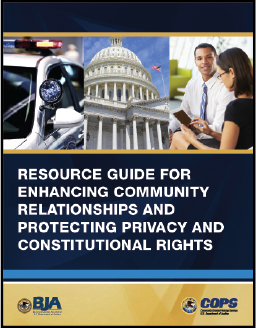
Law enforcement professionals are charged with preserving the peace and protecting life and property. Effective law enforcement requires trust and mutual respect between law enforcement agencies and the communities they serve. Progress has been made in enhancing these relationships as a result of community policing efforts over the past several decades. More recently, a number of police departments are embracing procedural justice to build community trust, particularly among communities of color where relationships with police have been strained for many years.
Building strong police-community relations requires a sustained effort over time, yet maintaining these relationships is exceedingly difficult during and in the aftermath of a high-profile incident or civil unrest. Especially during these tumultuous times, professional law enforcement and effective police operations are necessary for preserving the peace and maintaining the public’s trust. This requires planning and preparation before an incident even occurs and should include a close examination of police practices, policies, and operations—from evaluating protocols and training to choosing the appropriate equipment and uniforms.
For many years, the Bureau of Justice Assistance (BJA) and the Office of Community Oriented Policing Services (COPS Office) have been developing guides, publications, webinars, checklists, and tools for law enforcement on community policing, building trust, diversity training, protecting privacy, safeguarding first amendment rights, ensuring procedural justice, preventing racial profiling, and related topics. BJA and the COPS Office have partnered to gather these resources into a comprehensive guide to better assist your department or agency in your ongoing efforts to build stronger community-police relations as you fulfill your dual role of preserving the peace and maintaining the public’s trust.
